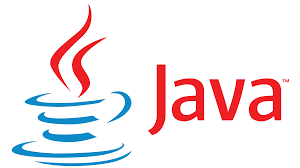Java 面试题(1)
创建不可修改的对象
- 不提供
setter方法- 实例变量声明
private finalfinal class修饰类,防止继承- 方法返回时,final修饰的实例变量可以直接返回,否则返回copy。
不可变对象的优点
- 方便创建、使用和测试。
- 线程安全的(String)
- 适合作为
Map和Set的Key。 允许
hashcode延迟初始化和缓存example
12345678910111213141516171819202122232425262728293031323334353637383940414243444546474849505152535455565758596061626364656667import java.util.Date;/*** Always remember that your instance variables will be either mutable or immutable.* Identify them and return new objects with copied content for all mutable objects.* Immutable variables can be returned safely without extra effort.* */public final class ImmutableClass{/*** Integer class is immutable as it does not provide any setter to change its content* */private final Integer immutableField1;/*** String class is immutable as it also does not provide setter to change its content* */private final String immutableField2;/*** Date class is mutable as it provide setters to change various date/time parts* */private final Date mutableField;//Default private constructor will ensure no unplanned construction of classprivate ImmutableClass(Integer fld1, String fld2, Date date){this.immutableField1 = fld1;this.immutableField2 = fld2;this.mutableField = new Date(date.getTime());}//Factory method to store object creation logic in single placepublic static ImmutableClass createNewInstance(Integer fld1, String fld2, Date date){return new ImmutableClass(fld1, fld2, date);}//Provide no setter methods/*** Integer class is immutable so we can return the instance variable as it is* */public Integer getImmutableField1() {return immutableField1;}/*** String class is also immutable so we can return the instance variable as it is* */public String getImmutableField2() {return immutableField2;}/*** Date class is mutable so we need a little care here.* We should not return the reference of original instance variable.* Instead a new Date object, with content copied to it, should be returned.* */public Date getMutableField() {return new Date(mutableField.getTime());}public String toString() {return immutableField1 +" - "+ immutableField2 +" - "+ mutableField;}}
Java是引用传递?值传递?
everything in java is pass-by-value
example
在函数中,虚参是实参的拷贝,它们指向同一个对象,改变虚参的引用,并不会改变实参的引用,但是改变虚参指向的对象的属性,会同时改变实参指向的对象的属性。
finally 关键字
- finally总是在try后执行。
- finally不只用于处理异常,更适合处理资源的回收和代码清理工作。
- JVM异常退出时,finally不一定会执行。
java.util.Date VS java.sql.Date
- java.util.Date == java.sql.Date + java.sql.Time
- java.sql.Date extend java.util.Date
标签接口(marker interface)
It provices means to associate metadata with class where the languages does not hava explicit support for such metadata.
一个类实现了标签接口,代表具有某种能力。
exampleSerializable Cloneable
main方法为什么声明为public static void
public
需要任何地方,任何对象都可以访问,因为它是程序的入口。
static
如果不是static,就需要创建对象,而且main传递可变参数,就会存在参数重载,就不知道那个main方法。
void
JVM调用main方法不需要接受返回参数。
可以使用System.exit(int)告诉JVM是否正常退出。0-正常。
创建String:new() 和 字面量的区别
- new() 会同时在JVM heap和字符串常量池(JVM heap的永久区)里创建,而字面量只在后者创建。
example
|
|
为什么String是不可变的
- 提高性能(string pool, reuse)
- 安全考虑(thread security, memory leak issues)
String比较
- == 比较对象引用,同一个对象或者同一个strig pool的引用,返回true。
- equals 被String覆写,比较字符的ascii值。
Menory leak issue
String对象使用substring(int beginIndex) 创建对象的时候,value[]不会变,只改变了字符串开始和结束的索引。引起内存的浪费。
substring
example
解决方法
interface 和 abstract class 区别
- interface中定义的变量都是public final,abstract class可以包含非final得变量。
- interface中定义的方法都是public abstract抽象方法,abstract class可以有实现的方法。
- interface using implements, abstract class using exntends。
- Java类可以实现多个接口,但是只能继承一个父类(单继承)。
- 都不可以实例化。
什么时候覆写hashCode()和equals()方法
hashCode()和equals()方法都是定义在Object类中。
equals()必须是自反的,对称的和传递的。o.equals(null)始终返回false。- `equals()相等,那么hashCode()也保持相等。
